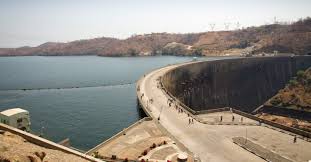Plan to boost cotton growing
The Agricultural Marketing Authority (AMA) is coming up with a new sustainable production and marketing model ahead of the cotton marketing season to boost production.
Government has already announced this year’s cotton floor producer price of $85 (about US$1) per kg.
Speaking at a field day at Arcadia Farm in Shamva last Friday, AMA marketing and economic researcher Mr Gerald Mashiri said the Ministry of Lands, Agriculture, Fisheries, Water and Rural Resettlement tasked them to develop a new cotton model and a system similar to that of the tobacco industry.
“Last week there was a cotton sub-sector consultative meeting in preparation for the cotton marketing season. Stakeholders were deliberating on the price model and the need for a sustainable pricing system,” he said.
“We are working with other stakeholders to develop a water tight production and marketing model. Our mandate as AMA is to look into the buying and selling of agriculture products except tobacco and pigs which are under the Tobacco Industry Marketing Board and Pig Industry Board respectively.
“We are there to create fairness and order in the agriculture sector. This season we are sponsoring cotton demonstration plots so that we bring all stakeholders to the farmers to increase their knowledge.
“We discourage farmers from side-marketing. We also encourage farmers to open bank accounts to ensure smooth payment for their produce and stability of prices.”
Last season, there were challenges around payment of cotton farmers and at some point, outstanding payments amounted to $1, 5 billion.
Farmers at Arcadia Farm, Mr Tashinga Gomo and his wife Wadzanai Masango, said he is renting a four-hectare plot and planted cotton on three-and-a-half hectares while the other half has maize.
Among his cotton varieties is Mahyco C571 and C569 a hybrid from India which gives 120 balls per plant.
He said the hybrid variety is resistant to pests.
“I am hoping for an improvement in the payment of my cotton this season. Last season I was affected by late payment and part of the money came in the form of groceries. This makes it difficult to plan for the farming season,” he said.-herald.cl.zw











